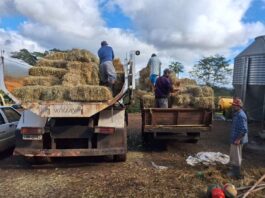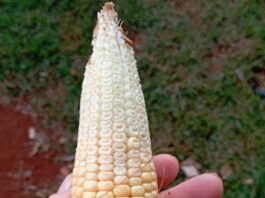Sumário
1. Mudanças na atividade de gado de corte no Brasil
1.1 Inovações tecnológicas e qualificação do setor
1.2 Desafios do mercado internacional
2. A importância do Índice de Preço do Gado de Corte
2.1 Criação e parceria com a CEPEA
2.2 Utilização do índice como referência de mercado
3. Coordenação e comportamento dos agentes no mercado
3.1 Economia dos Custos de Transação
3.2 Incertezas e redução dos custos de transação
4. O papel do índice de preço na redução da incerteza
4.1 Relação entre o índice CEPEA/B3 e regiões do Brasil
A atividade de gado de corte no Brasil passou por mudanças nas últimas décadas, como inovações tecnológicas no sistema de produção e a qualificação do setor. A gestão das fazendas e dos frigoríficos também evoluiu, enfrentando desafios no mercado internacional. O índice de preço do gado de corte, criado em parceria com a CEPEA, tornou-se uma referência importante para o mercado, reduzindo incertezas e custos de informação. A coordenação e o comportamento dos agentes envolvidos nas transações são influenciados pela economia dos custos de transação e a necessidade de mitigar incertezas. O uso desse índice é essencial para reduzir a incerteza do preço recebido pelos produtores. A relação entre o índice e as diversas regiões do Brasil mostra a sua importância como referência de preço. O mercado de gado de corte no Brasil tem se beneficiado desse índice como forma de melhorar a eficiência e a lucratividade da cadeia como um todo.
A atividade de gado de corte no Brasil passou por mudanças nas últimas décadas, como inovações tecnológicas no sistema de produção e a qualificação do setor. A gestão das fazendas e dos frigoríficos também evoluiu, enfrentando desafios no mercado internacional. O índice de preço do gado de corte, criado em parceria com a CEPEA, tornou-se uma referência importante para o mercado, reduzindo incertezas e custos de informação. A coordenação e o comportamento dos agentes envolvidos nas transações são influenciados pela economia dos custos de transação e a necessidade de mitigar incertezas. O uso desse índice é essencial para reduzir a incerteza do preço recebido pelos produtores. A relação entre o índice e as diversas regiões do Brasil mostra a sua importância como referência de preço. O mercado de gado de corte no Brasil tem se beneficiado desse índice como forma de melhorar a eficiência e a lucratividade da cadeia como um todo.
Gostou das nossas dicas? Possui alguma outra que gostaria de compartilhar com a gente?
The Brazilian fed cattle activity has been facing changes over the last decades, such as technological innovations in the production system and the qualification process for the industry.
Organization and improvement in the farm management had already been observed in a recent past. Slaughterhouses and producers face some challenges, pressed by international demanding markets, especially the European. However, the organization process in the whole system has been favoring to improve both production and trades. Consequently, it helps in the search for efficiency and profitability in the chain, with competitive and adequate prices for producers, the industry and consumers.
Some aspects favored a quick change in the organizational fed cattle environment from the mid-90’s to the beginning of the 21st century, such as the creation of the CEPEA/B3 Index for fed cattle.
The need to define a value for the financial settlement of each fed cattle contract traded at the current B3 (former Commodities & Futures Exchange) has led the institution to set a partnership with Cepea-Esalq/USP in October 1993. A Price Index with credibility needed to be created, and its elaboration process involved Cepea researchers, market players from different areas and technicians of the Stock Exchange
Therefore, in March 1994, the market has started to count on the Fed Cattle Price Index that has been released uninterruptedly since then. In a continental country like Brazil, the largest meat exporter, with the biggest commercial herd in the world, it is extremely important to have a price index, since it becomes a market governance reference, reducing both uncertainties and information costs for players in the market.
Based on the Economic Theory, in order to understand a coordination system, in the case of a price index with financial settlement, it is necessary to know the relations among players, from production to final trades.
The use of a price index is justified by the intense relation between agents and the necessary coordination of their productive activities in scenarios of high uncertainty and possibilities of opportunism.
In order to understand the behavior of players involved in these transactions, the basic factors related to Transaction Cost Economics in an uncertain environment are: a) bounded rationality, in which players act rationally, but in a limited way – thus, the form of obtaining information and processing it are limited, leading the relations among agents to be incomplete; b) opportunism, in which each party extracts their respective quasi-rents from the other. Moreover, there are uncertainties in trades.
This aspect may present problems due to unexpected discrepancies of transactions and the necessary dimensions for controlling structures. If they are excessively big, their costs are higher. Therefore, the behavioral uncertainty, as a result of the opportunist use, influences organizational forms to mitigate disparities and reduce transaction costs.
Uncertainties when trading fed cattle are important to indicate the behavior of both producer and the industry. The major uncertainty point in this relation is the price received by producers. As a result, the use of a price index is essential to reduce this uncertainty.
Over the last 30 years, a direct and significant relation between the CEPEA/B3 Index for fed cattle (São Paulo state) and other 28 regions in 11 Brazilian states has been observed through several analyses.
They show that the Index transmission to other regions has an intensity very close to 1. The more organized are the areas and its regional position, the higher is the price transmission intensity.
This context indicates that the fed cattle market in Brazil has absorbed the idea of a financial index as a price reference, reducing uncertainties and information costs for players in different areas in their decision-making.
The Brazilian fed cattle activity: Changes and Improvements
The Brazilian fed cattle activity has undergone significant changes and improvements in the past few decades. These changes include technological innovations in the production system and a focus on improving the qualifications process for the industry.
Organization and Improvement in Farm Management
In recent years, there has been a noticeable improvement in the organization and management of farms within the Brazilian fed cattle industry. This increase in organization has been driven by a variety of factors, including international market demands, particularly from European markets. The industry has responded to these challenges by implementing more efficient processes and systems in order to improve production and trade. This focus on efficiency and profitability has resulted in competitive and appropriate prices for producers, the industry, and consumers.
The Creation of the CEPEA/B3 Index
One key aspect that has facilitated the rapid organizational changes in the fed cattle environment is the creation of the CEPEA/B3 Index for fed cattle. This index was established in order to establish a standardized value for financial settlements of fed cattle contracts traded on the B3 (former Commodities & Futures Exchange). The partnership between B3 and Cepea-Esalq/USP, which was formed in October 1993, aimed to create a credible and reliable price index. This involved the collaboration of Cepea researchers, market players, and technicians from the stock exchange.
Since its inception in March 1994, the Fed Cattle Price Index has provided a crucial reference point for the market. In a vast country like Brazil, which is the largest meat exporter and has the largest commercial herd in the world, having a price index is essential for market governance. It helps reduce uncertainties and information costs for all players involved.
Coordination and Transaction Cost Economics
To fully understand the coordination system facilitated by a price index with financial settlement, it is important to consider the relationships among all the players involved, from production to final trades. The use of a price index is justified by the intense interdependency between agents and the need for coordination in scenarios characterized by high uncertainty and the potential for opportunism.
Transaction Cost Economics provides insights into the behavior of players in these transactions, particularly in an uncertain environment. Factors such as bounded rationality and opportunism influence the relationships among agents and can create uncertainties in trades. To mitigate disparities and reduce transaction costs, organizational forms are necessary. Behavioral uncertainty, resulting from opportunistic behavior, has a significant impact on organizational structures.
Reducing Uncertainties in the Fed Cattle Market
Uncertainties in trading fed cattle are crucial indicators of the behavior of both producers and the industry as a whole. The most significant uncertainty in this relationship is the price received by producers. A price index is essential in reducing this uncertainty and providing a reference point for fair pricing.
The CEPEA/B3 Index and Regional Price Transmission
Over the past 30 years, there has been a direct and significant relationship observed between the CEPEA/B3 Index for fed cattle in São Paulo state and 28 other regions across 11 Brazilian states. This analysis demonstrates that the index has a high level of transmission to other regions, with an intensity close to 1. The more organized and strategically positioned the regions are, the greater the intensity of price transmission.
This context underscores the success of the fed cattle market in Brazil in embracing the use of a financial index as a price reference. This has effectively reduced uncertainties and information costs for players in different regions, enabling better decision-making.
Este texto não reflete, necessariamente, a opinião do Jornal Do Campo
Conclusões
Com base nas análises realizadas, é possível concluir que a atividade de gado bovino no Brasil tem passado por mudanças significativas nas últimas décadas. O uso de tecnologias inovadoras no sistema de produção e o processo de qualificação para a indústria têm impulsionado melhorias na gestão das fazendas e nos abatedouros.
O processo de organização e aprimoramento em todo o sistema têm contribuído para melhorar tanto a produção quanto o comércio de carne bovina. Isso resulta em maior eficiência e lucratividade na cadeia produtiva, com preços competitivos e adequados para produtores, indústria e consumidores.
Além disso, a criação do Índice CEPEA/B3 para o preço do gado bovino desempenhou um papel fundamental nessa transformação. A necessidade de definir um valor para a liquidação financeira de cada contrato de gado negociado na B3 levou à parceria com o CEPEA-Esalq/USP, resultando em um índice de preço confiável.
O uso de um índice de preço é justificado pela intensa relação entre os agentes envolvidos e a necessidade de coordenação de suas atividades produtivas em um ambiente de alta incerteza e possibilidade de oportunismo. É uma forma de reduzir as incertezas e os custos de informação para os participantes do mercado.
Ao longo dos últimos 30 anos, foi observada uma relação direta e significativa entre o Índice CEPEA/B3 para o preço do gado bovino e outras 28 regiões em 11 estados brasileiros. Isso indica que o mercado absorveu a ideia de um índice financeiro como referência de preço, reduzindo incertezas e custos de informação para os participantes em diferentes regiões.
Perguntas e Respostas
1. Quais são as mudanças recentes na atividade de gado bovino no Brasil?
As mudanças recentes na atividade de gado bovino no Brasil incluem inovações tecnológicas no sistema de produção e o aprimoramento da gestão nas fazendas e abatedouros.
2. Quais são os desafios enfrentados pelos frigoríficos e produtores?
Os frigoríficos e produtores enfrentam desafios impostos por mercados exigentes, especialmente o europeu. No entanto, a organização do sistema tem favorecido a melhoria da produção e do comércio.
3. Como o Índice CEPEA/B3 para o preço do gado bovino foi criado?
O Índice CEPEA/B3 foi criado por meio de uma parceria entre a B3 (antiga Bolsa de Mercadorias & Futuros) e o CEPEA-Esalq/USP. O objetivo era estabelecer um índice de preço confiável para a liquidação financeira dos contratos de gado bovino.
4. Por que o uso de um índice de preço é importante na atividade de gado bovino?
O uso de um índice de preço é importante na atividade de gado bovino porque reduz a incerteza, especialmente em relação ao preço recebido pelos produtores. Isso ajuda a coordenar as transações entre produtores e a indústria e reduz os custos de informação.
5. Qual é a relação entre o Índice CEPEA/B3 e outras regiões do Brasil?
O Índice CEPEA/B3 tem uma relação direta e significativa com outras 28 regiões em 11 estados brasileiros. Quanto mais organizadas forem as regiões e sua posição regional, maior será a intensidade de transmissão do índice de preço.



